Having safer sex means you face less risk of contracting an STD (also known as an STI) and experiencing an unplanned pregnancy. But just what does safer sex mean?
What is safer sex?
Safer sex is the practice of taking active precautions to reduce the risk of STDs and unplanned pregnancies. There are several ways to do this, including (but not limited to):
- avoiding sexual intercourse altogether,
- getting regularly tested for STDs,
- promptly receiving medical attention if a problem arises,
- having an open and honest talk with any and all intimate partners,
- being in a mutually monogamous relationship with an STD-free partner,
- avoiding drug and alcohol abuse,
- actively and correctly using safe birth control methods, and
- consistently and correctly using condoms for all sexual acts.
Is oral sex safe?
Like other forms of sex, oral sex carries a risk of STD transmission. This is why it’s important to use condoms correctly for all forms of sexual activity, including oral sex.
Can I reuse condoms?
No! Always use a new unbroken condom for each and every sexual act.
How to put on a condom
It’s common to not know how to use a condom correctly. Below is a general guideline of how to use condoms—the right way.
No matter what type of condom you use or where you use it, be sure to do the following:
- Use a new, unused condom for each and every sexual activity.
- Check that the condom is not expired. (Yes, condoms DO expire.) If it is expired, do NOT use it. You can check for the expiration date on either the box or individual condom wrapper.
- Check that the condom is not broken. If the condom is compromised, do NOT use it.
- Keep condoms in a cool, dry place to protect their integrity. Do NOT store condoms in wallets, as this increases the risk of tears.
- Do not use more than one condom at a time. Doubling up on condoms isn’t safer. In fact, it’s quite the opposite! Using two condoms at once increases friction that can result in tears.
How to use a male condom
A male condom refers to a barrier that goes over the penis. It is also known as an external condom.
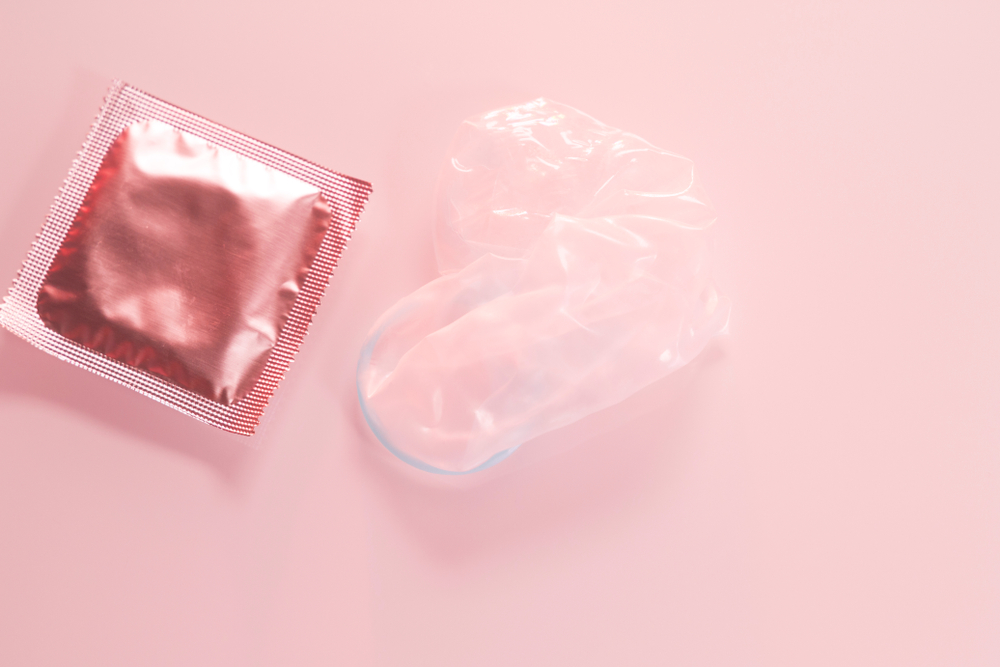
Some of the benefits to using this type of protective barrier include:
- it is cheap, and
- it is widely available.
Some of the drawbacks to using this type of protection include:
- it cannot 100% protect against STDs spread by skin-to-skin contact, as this contact can occur outside the protective barrier of the condom, and
- commonly made of latex, it may cause allergic reactions and is not compatible with oil-based lubricants.
Before Sex
- Grab a new, unused condom that is the correct size for the person who will be wearing it. If it is too tight, there is risk of tearing and discomfort. If it is too loose, there is risk of it slipping or falling off entirely.
- Gently open the package. Do not use teeth or another sharp object to open the package, as this could result in tears.
- Holding the tip of the condom, gently roll it down the erect penis until you reach the base. People with foreskin must pull it back first.
- If you use lube, make sure that it is water or silicone based. Oil-based lubricants have been known to break down latex condoms.
- Always throw everything away into a trash can. Trying to flush used condoms down a toilet can cause clogs.
After Sex
- Holding the base of the condom, gently pull out. Holding the base keeps the condom in place during the process.
- After pulling out, throw the condom away.
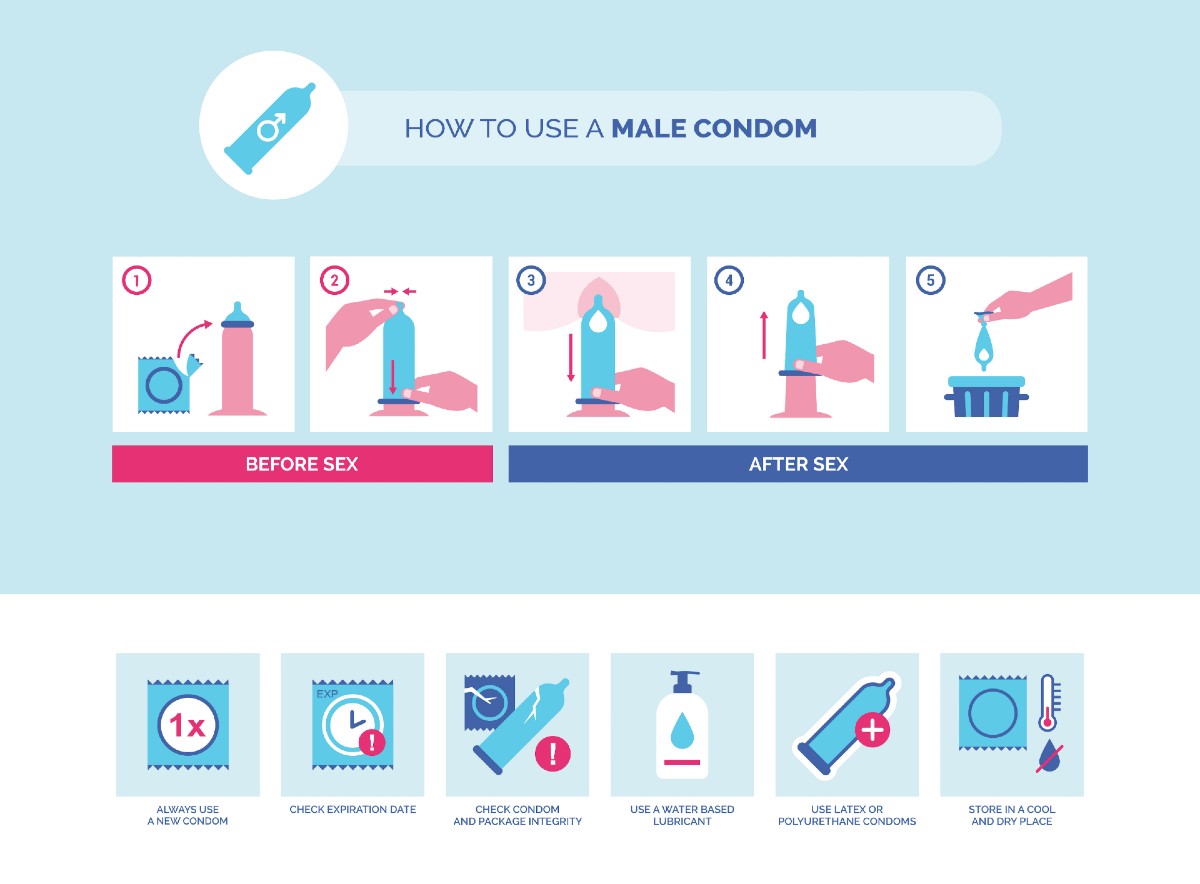
For more information on how to use a male condom, go here.
How to use a female condom
A female condom refers to a polyurethane protective barrier that goes inside the vagina during vaginal intercourse or the anus during anal intercourse. This protective barrier is also sometimes called an internal condom.
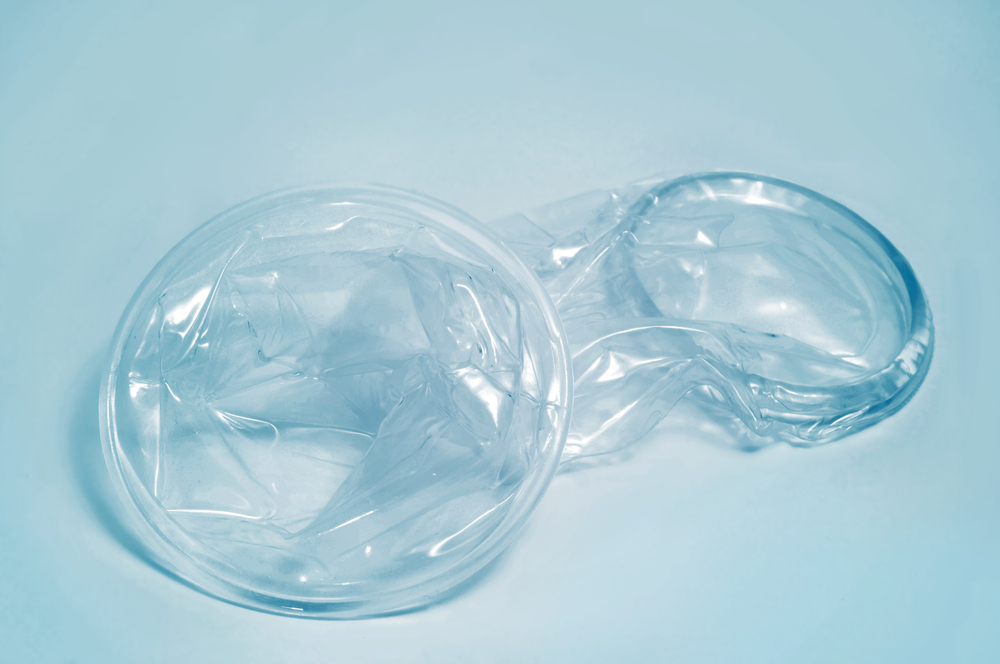
Some of the benefits to using an internal barrier include:
- it it can be inserted before sexual activity begins,
- it is compatible with oil-based lubricants, and
- people with latex allergies can use them.
Some of the drawbacks to using an internal barrier include:
- it won’t provide protection against STDs spread by skin-to-skin contact if the infected area is outside the coverage of the internal barrier, and
- it can take practice to become comfortable using it.
Note that the inner ring with a closed end goes inside the body; it will hold everything in place. The thinner open ring rests outside the body and covers the vaginal or anal opening.
Before Sex
- Grab a new condom.
- Gently open the package.
- Relax; this will help you more effectively and comfortably insert the condom.
- Hold the closed end and gently squeeze it. Then, insert it into the vagina or anus.
- Gently push the condom back as far as it will go. If it is placed in the vagina, it should rest at the opening of the cervix.
- Make sure the thinner open end of the condom rests outside the vagina or anus. Ensure it’s not twisted.
- Make sure your partner does not come between the barrier and the walls of the vagina or anus. If this happens, stop having sex.
- Make sure your partner does not push the open ring into the vagina or anus. If this happens, stop having sex.
After Sex
- Removing a female condom is a little different than removing a male one. You must twist the thinner open ring and pull it out. Twisting helps keep any fluid enclosed in the barrier.
- Throw everything away.
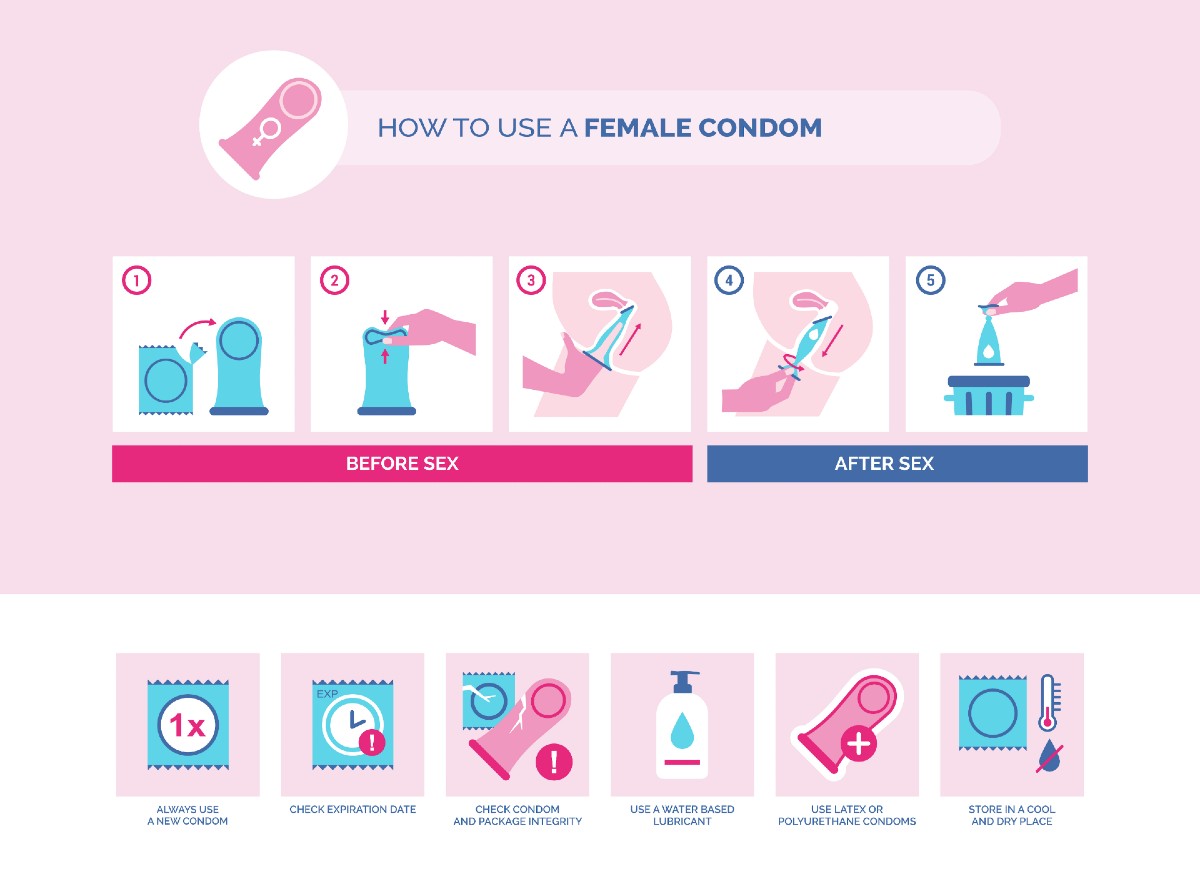
For more information on how to use a female condom, go here.
How to use dental dams
A dental dam, also known as an oral dam, is a barrier that goes between the mouth and either the vagina or anus during sexual activity.

Some of the benefits to using a dental dam include:
- it can help protect against STDs.
Some of the drawbacks to using an oral dam include:
- it is not as widely available as other protective barriers, and
- it won’t protect against STDs spread by skin-to-skin contact if the infected area is outside the coverage of the protective barrier.
Before Sex
- Grab an unused dental dam and gently open the packaging.
- Place the dam flat against the external opening of either the vagina or anus.
- Make sure your lube is water or silicone based. Oil-based lubricants can break down latex dental dams.
- Make sure the dam is held in place the entire time it is used.
After Sex
- Throw everything away.
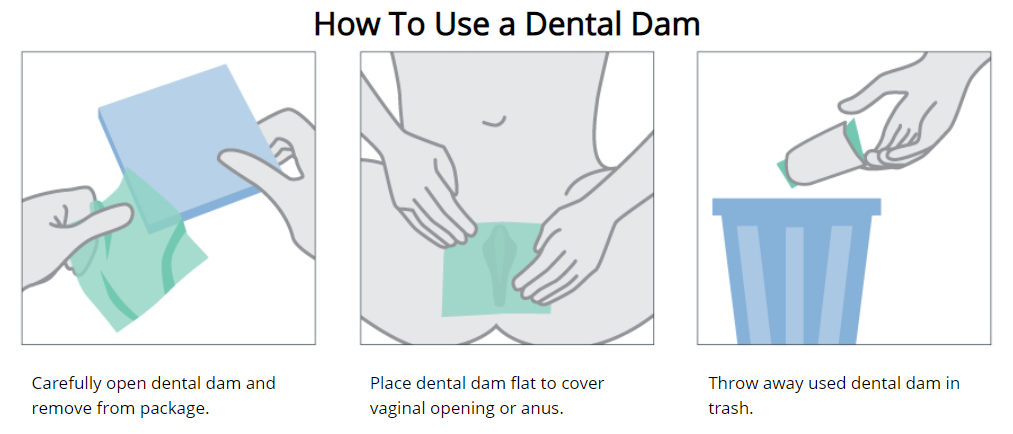
For more information on how to use a dental dam, go here.
How to Make a Dental Dam
Dental dams are harder to come by than other types of protective barriers. If you can’t find any in a store near you or can’t find something affordable online, there is a solution: make your own!
- Grab a latex or polyurethane male condom.
- Gently open the packaging and then remove the condom.
- Unroll the condom entirely.
- Using a pair of scissors, cut off the tip.
- Using scissors, cut off the open end of the condom.
- Once both ends are removed, use your scissors to cut a straight line from one end to the other. This will create a square-shaped barrier that can help provide protection during sexual activity.
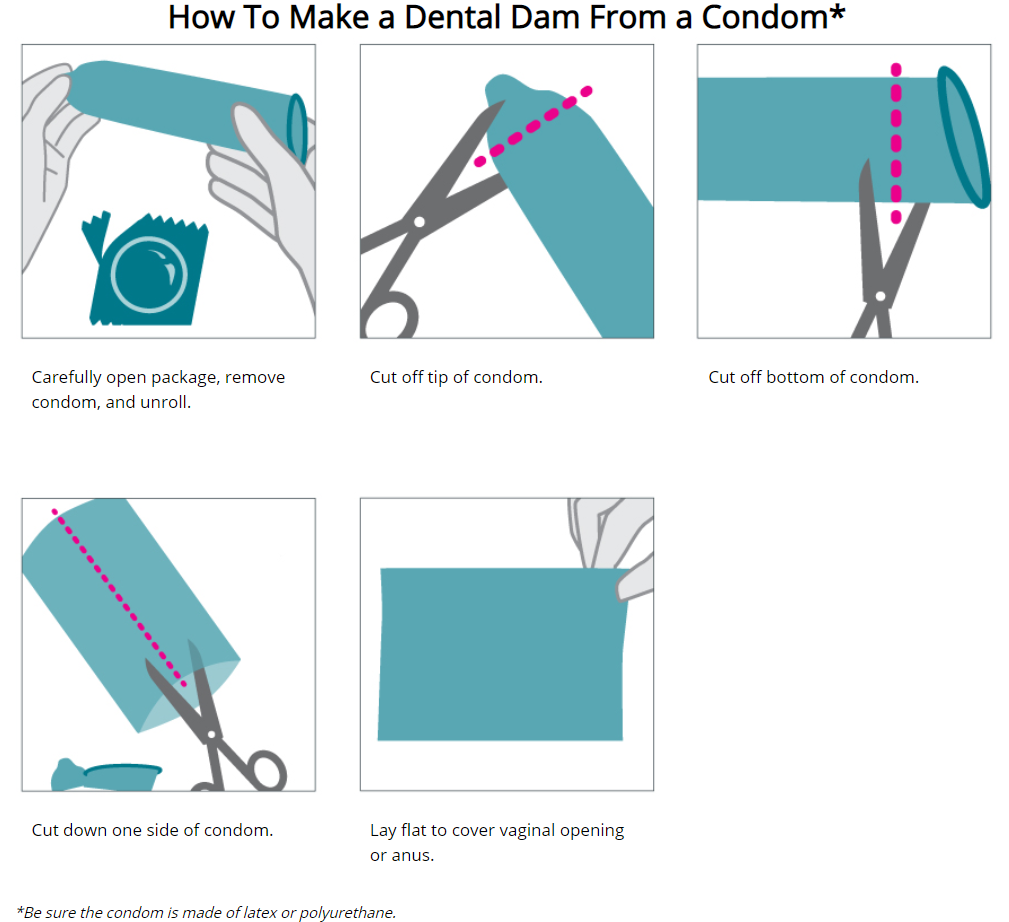
For more information on how to make a dental dam, go here.
What birth control method is right for me?
If you’re looking not just for STD protection, but also a form of birth control and health management, you have several options. The best birth control method for you depends on your specific needs. While condoms—used correctly—are effective forms of birth control, other methods include:
- oral contraception, aka “the pill,”
- vaginal ring,
- contraceptive patch,
- intrauterine device (IUD),
- contraceptive implant,
- progestin shots,
- and more!
To decide which method is for you, you will need to have an open and honest talk with your healthcare provider.
Note that hormonal birth control methods, like the pill, do NOT protect against STDs. If you are sexually active and want to protect yourself against STDs, one of the best things you can do is use a latex or polyurethane condom or dam.
Why safer sex is important
In the end, safer sex doesn’t 100% guarantee that you or your partner(s) won’t contract an STD or experience an unplanned pregnancy even if you use protection correctly. However, it does reduce your chances of experiencing both of these situations. The health and well-being of you and any intimate partner is important, so be sure to take active steps to protect yourself.
Centers for Disease Control and Prevention (CDC). (Last reviewed 2016). Male Condom Use. U.S. Department of Health and Human Services. https://www.cdc.gov/condomeffectiveness/male-condom-use.html
CDC. (Last reviewed 2016). Female Condom Use. U.S. Department of Health and Human Services. https://www.cdc.gov/condomeffectiveness/Female-condom-use.html
CDC. (Last reviewed 2016). Dental Dam Use. U.S. Department of Health and Human Services. https://www.cdc.gov/condomeffectiveness/Dental-dam-use.html
CDC. (Last reviewed 2013). Condom Fact Sheet In Brief. U.S. Department of Health and Human Services. https://www.cdc.gov/condomeffectiveness/brief.html
*These images are for illustrative purposes only and should not be used for diagnostic purposes. STDTestingFacilities does not suggest that the authors/creators of these images endorse(s) this site.
***”How to Have Safer Sex: All Your Questions, Answered” and other resources on this site are not designed to act as replacements for medical information or advice from a licensed healthcare professional.





